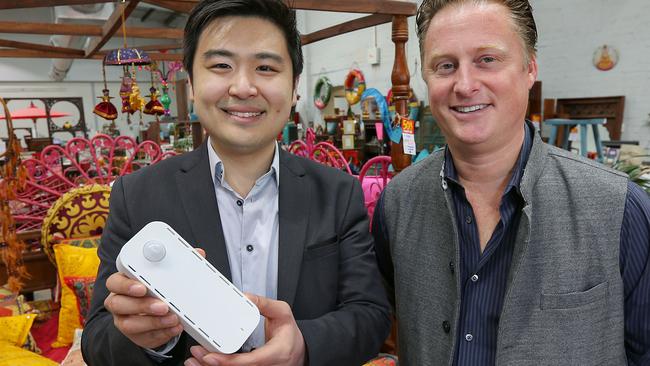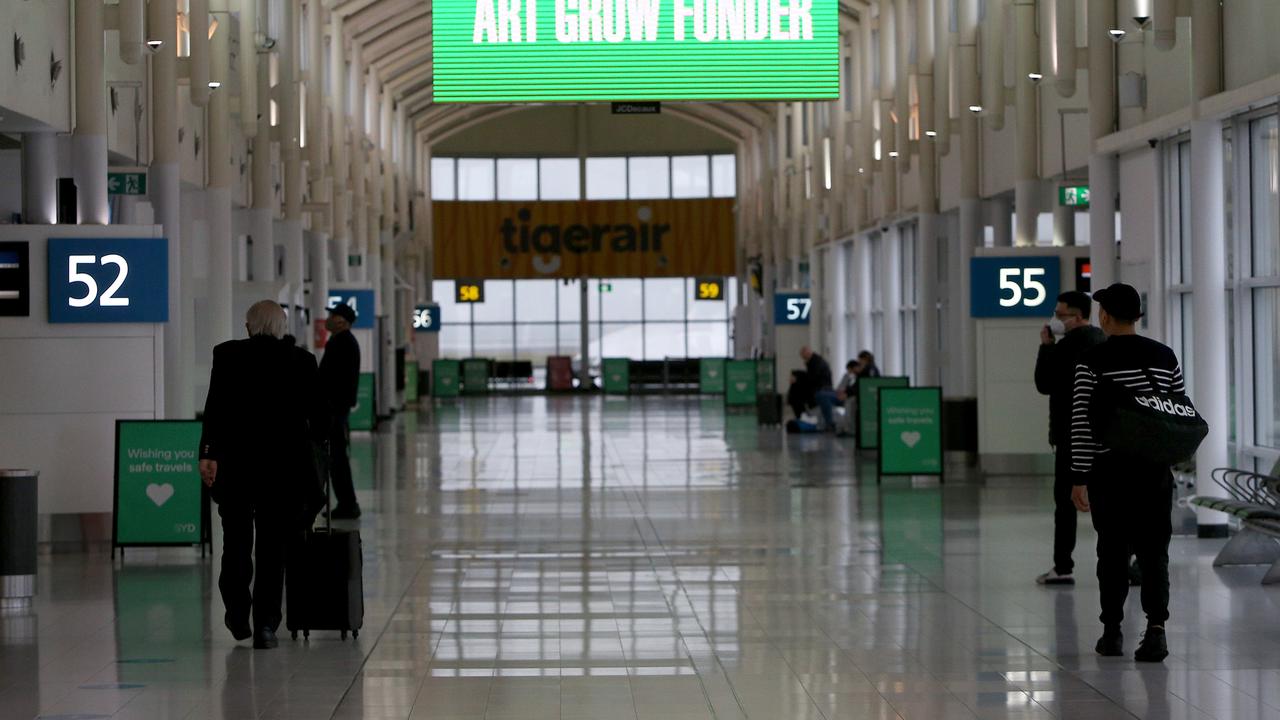Retail sensors a game changer
AN invention that tracks the movements of shoppers via their mobile phones has the potential to help bricks-and-mortar shops fight back, its creators say.

Business
Don't miss out on the headlines from Business. Followed categories will be added to My News.
AN invention that tracks the movements of shoppers via their mobile phones has the potential to help bricks-and-mortar shops fight back, its creators say.
Melbourne-based start-up enterprise Kepler Analytics is rolling out the plug-in device, which creates “heat maps” of retail outlets, showing how shoppers move around.
It will track how long customers linger at certain points, how much time they spend in-store, and even how many people are walking past.
The intelligence allows retailers to pinpoint “dead zones” not being visited by shoppers, providing an opportunity to overhaul them.
The inventor says the smartphone-sized devices have received the all-clear in audits by privacy experts and legal firms. They detect the so-called media access control address on devices, such as phones and tablets, and track user movement within the store. Every smartphone has a MAC address — essentially a unique “digital signature”.
Kepler Analytics managing director David Mah said shoppers had nothing to fear.
“We don’t know who you are, just that you have a wi-fi enabled device,” he said.
“The MAC addresses are irreversibly encrypted to further protect shopper privacy.”

Mr Mah said the system could not be used to collect personal information without shoppers’ explicit consent.
The Kepler Sensor is patent pending and is designed, assembled and tested in Fitzroy. The sensor was put through trials over eight months before being rolled out to retailers in the past two months. So far, almost 100 shops have signed up.
The sensors are seen as an addition to a suite of products to help gather insights about shoppers, complementing databases, personalised offers based on previous purchases, and the use of lighting, colour, aroma and sound to get shoppers to linger longer.
While other companies produce equipment to help trace the movements of shoppers, Kepler says its system is far more cost-effective — potentially providing a boon to smaller retailers by putting the technology in their reach, and helping bricks-and-mortar retailers fight back against online rivals.
Mr Mah said the sensors were a third the cost of video camera systems and on a par with infra-red devices that did not provide the same data.
Toby Darvall, chief executive at home and craftwear retailer Ishka, said the device had the potential to be a game changer for bricks-and-mortar retailers.
“It is very early days for this system but it is incredibly exciting,” he said.
Ishka, which has been selling goods sourced from around the world for 46 years, has started using the sensors in six stores but plans to roll them out to more than 30 outlets nationally.
HOW IT WORKS
RETAILERS install one Kepler sensor for each 150 sq m of floorspace
THE sensors monitor how shoppers move around, using signals from their mobile phones
RETAILERS can see how long shoppers linger in certain areas
THE information is compiled along with sales data to help traders improve their store layouts
Going for Growth is a Herald Sun series, presented in partnership with NAB, championing Australian business success stories.


